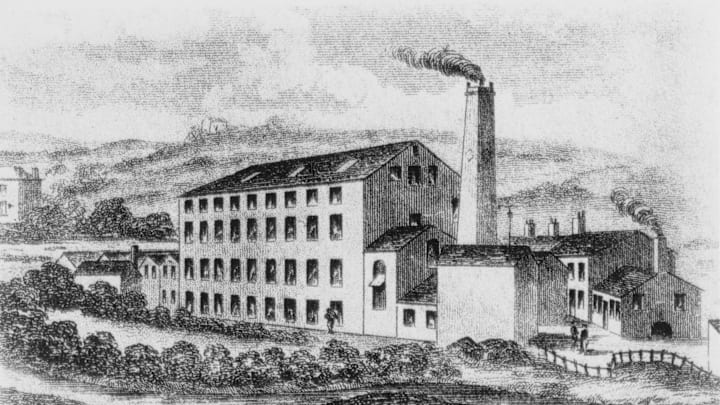In the modern era, Luddites are mainly defined by what they don’t do. Your friend who stays off social media, doesn’t own a television, and can only be reached through their landline may identify as a Luddite. Before the term came to describe someone who shows disdain for new technology, it was the name of a political group whose members actively fought for a specific cause. Today, when few jobs feel safe from automation and artificial intelligence, their history is more relevant than ever.
The History of the Luddite Movement
The first Luddites were trained craftspeople working in Britain’s textile industry in the early 19th century. Rather than shunning technology on principle, many of them worked with machines to knit and weave their fabrics. Those machines required a high skill level to operate, and they produced materials on par with those that were handmade.
The artisans’ issue lay with the rise of textile mills using mechanical looms to churn out lower-quality products at a fraction of the cost. It was an easy trade-off for many manufacturers, and skilled human labor became less valuable as a result. Meanwhile, the Napoleonic Wars were leaving a streak of economic hardship in their wake. Faced with threats to their job security and the integrity of their craft, textile workers revolted.
The first strike of the Luddites came on March 11, 1811. On that date, fed-up workers organized in Nottingham to demand more jobs and higher pay. The demonstration ended with them breaking into a factory to destroy the weaving equipment. This sparked a movement that lasted roughly a year, with textile factories across northern England becoming targets.
The British government took swift action to quell the unrest. They deployed thousands of troops at factory gates and made breaking machinery a crime punishable by death. This aggressive response culminated in April 1812 with soldiers shooting into a horde of protesters storming a mill near Manchester. Three Luddites perished, and at least five were killed in the aftermath the next day. The protests fizzled out shortly after that.
Where Did the Luddites Get Their Name?

While the Luddite movement was short-lived, the legacy of the name itself has lasted into the 21st century. Many people consider themselves “Luddites” for having push notifications disabled on their phones, but perhaps fewer know about the character the term is named for. According to legend, Ned Ludd was a stocking weaver’s apprentice from Leicestershire who destroyed his boss’s knitting machine when he was criticized for using it incorrectly. The event supposedly took place in 1779, though there’s no evidence that it ever actually happened.
Ludd himself is likely a fictional figure, but his story still resonated with 19th-century textile workers. In addition to naming their movement after him, they referred to “General” or “Captain Ludd” as their unseen leader. They even sent letters to their enemies signed “Ned Lud’s Office, Sherwood Forest”—the same address as Robin Hood.
Though it comes from violent and political beginnings, the term Luddite has been sanitized over the centuries. People often aspire to the label today not necessarily because they fear technology is coming for their jobs, but because they yearn for a simpler, disconnected life. But with new tech expected to force millions of Americans from their current employment by 2030, the word’s original definition hasn’t lost its potency.
